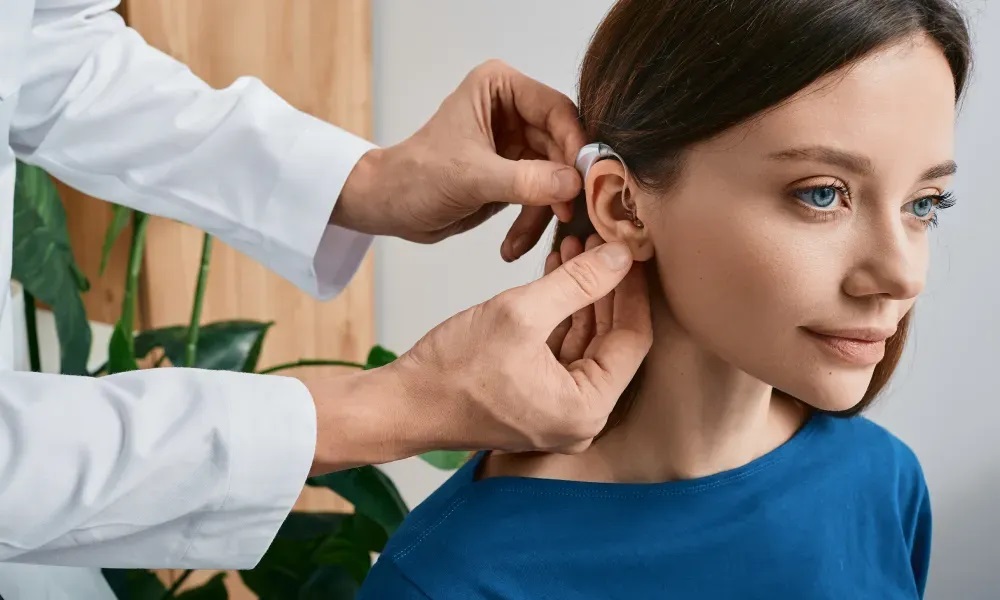In the world of audiology, hearing aids have been instrumental in transforming the lives of millions of people. These tiny electronic devices have the power to restore and enhance hearing abilities, providing individuals with hearing loss the opportunity to engage more effectively in social interactions and improve their overall quality of life. This article delves into the functionalities, types, and advantages of hearing aids, as well as the latest advancements in this field. For more information on featured hearing aids, one can visit https://chappell-hearing-aids.com/featured-hearing-aids/.
Understanding Hearing Loss
Hearing loss is a widespread condition affecting individuals of all ages, from infants to the elderly. It can be triggered by diverse factors such as age-related degeneration, exposure to loud noises, infections, and genetic predisposition. Those afflicted with hearing loss often experience challenges understanding speech, participating in conversations, and enjoying the sounds of everyday life.
The Role of Hearing Aids
Sophisticated hearing aids are designed to amplify sounds, making them more audible for individuals with hearing impairment. They function by capturing sound waves through a built-in microphone, processing and amplifying these signals and transmitting them into the ear canal via a speaker. Through this process, hearing aids enable people with hearing loss to perceive sounds more clearly and comfortably.
Types of Hearing Aids
- Behind-the-Ear (BTE) Hearing Aids: This type of device rests discreetly behind the ear and is connected to a custom-molded earpiece or earbud. BTE hearing aids offer versatility and are suitable for individuals with mild to profound hearing loss.
- In-the-Ear (ITE) Hearing Aids: ITE hearing aids are custom-made to fit directly into the outer ear, providing a less noticeable appearance compared to BTE devices. They are particularly suitable for those with mild to moderate hearing loss.
- In-the-Canal (ITC) and Completely-in-the-Canal (CIC) Hearing Aids: These hearing aids are the smallest and least conspicuous, fitting partially or entirely into the ear canal. They cater to mild to moderate hearing loss, although their compact size may limit certain features.
- Receiver-in-Canal (RIC) Hearing Aids: RIC hearing aids consist of a small behind-the-ear component connected to an earpiece positioned in the ear canal. They offer a more natural sound and are appropriate for various degrees of hearing loss.
Advancements in Hearing Aid Technology
Recent years have witnessed significant strides in hearing aid technology, leading to improved performance and user experience:
- Digital Signal Processing (DSP): Contemporary hearing aids make use of digital signal processing to improve sound processing. DSP enables advanced noise reduction, directionality, and feedback cancellation, resulting in clearer and more natural sound perception.
- Connectivity and Wireless Features: Many hearing aids now boast Bluetooth connectivity, allowing users to connect with their smartphones, televisions, and other devices. This feature enables direct audio streaming and hands-free phone calls, enhancing accessibility and convenience.
- Rechargeable Batteries: Traditional disposable batteries have been replaced with rechargeable options, reducing waste and making hearing aids more environmentally friendly.
- Artificial Intelligence (AI) Integration: Some hearing aids incorporate AI capabilities, continuously adapting to the user’s listening environments and preferences. This AI-driven personalization ensures a tailored hearing experience.
Benefits of Using Hearing Aids
The benefits of hearing aids extend far beyond improved hearing capabilities. They have a profound impact on various aspects of an individual’s life:
- Enhanced Communication: Hearing aids facilitate better communication, allowing users to engage in conversations, participate in social activities, and maintain meaningful relationships.
- Improved Cognitive Function: Addressing hearing loss with hearing aids has been linked to enhanced cognitive function, as it reduces the cognitive strain caused by untreated hearing impairment.
- Emotional Well-being: Hearing aids can alleviate feelings of isolation, depression, and anxiety often associated with hearing loss, leading to improved emotional well-being and overall quality of life.
- Safety and Awareness: By amplifying environmental sounds, hearing aids help users stay alert to potential hazards, such as approaching vehicles or emergency sirens.
Conclusion
Hearing aids have revolutionized the lives of individuals with hearing loss, offering them the opportunity to experience the world around them more fully. With various types and advanced technologies available, individuals can find a solution that suits their specific needs and preferences. By restoring hearing abilities and enhancing overall well-being, hearing aids continue to play a crucial role in promoting a fulfilling and connected life for those with hearing impairment. For more information kindly check relevant online websites.

